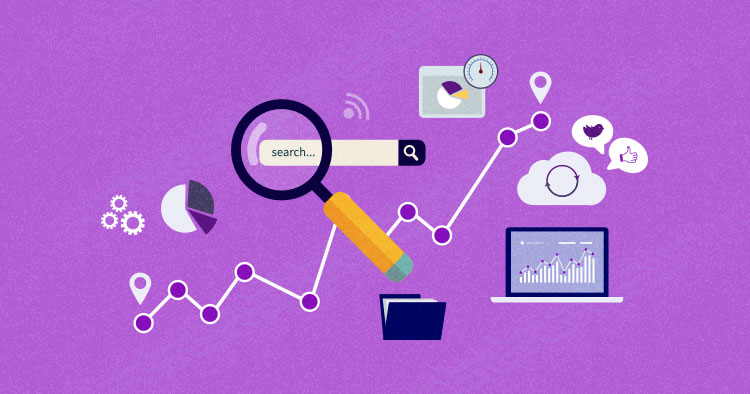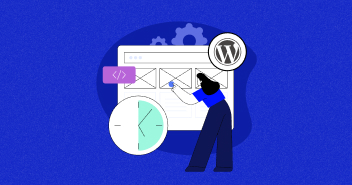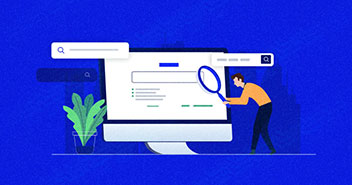
If you’re the owner of a small business, you’re busy. You’re handling the finances, the staff and management, the planning and strategy, and not to mention the daily operations.
So when the topic of optimizing your website for increased traffic and visibility comes up, it’s completely understandable why you’d hesitate to take on yet another task – especially if you don’t think you have the technical expertise to handle it!
And yet, the importance of SEO for online success cannot be underestimated. In fact, it can be considered the backbone of any digital marketing plan. There are many excellent SEO agency software in the market now as well. What’s more is that marketing strategies such as email marketing, PPC ads, or content marketing are unlikely to reap the desired results unless your SEO is on point.
So let’s dive into how small business owners can use SEO effectively, even if they’re strapped for time or aren’t SEO experts. But first, let’s a quick look at how SEO is categorized, and just what technical SEO refers to.
The Different Aspects of Search Engine Optimization
SEO is a broad term that refers to various practices geared towards increasing the quality and quantity of traffic on a website via organic search engine results. Technically, it can be grouped into the following two categories:
Off-Page SEO
Off-page SEO involves using techniques and strategies that can help the website rank on search engine result pages (SEPRs). It involves link building strategies including social media, guest posts, content marketing, blogs, and forum commenting, among others.
In short, off-page SEO tells search engines what people think about your website. The higher the number of valuable links your website gets, the more credible and trustworthy your website will be in Google’s eyes and the higher it will rank!
On-Page SEO
On-page SEO is an entirely different story. It is all about optimizing the actual website, including the content as well as the HTML source code of a webpage. On-page SEO can be further divided into non-technical and technical SEO.
- The non-technical side of on-page SEO involves content optimization, keyword selection and placement, web page design and layout. It helps users see what the page is about and how to navigate it.
- Technical SEO, on the other hand, is for web crawlers. Web crawlers are bots that gather information from across billions of web pages, and organize it appropriately in the Search index.
Your technical SEO helps these crawlers interpret the content on your website and index your content so that the search engine promptly displays the page to the right audience.
Technical SEO is crucial to business success. Unlike off-page or non-technical on-page SEO, technical SEO starts as soon as you start building your website.
But what is technical SEO exactly, and how can you make the most of it?
Let’s find out.
What Does a Technically Search Engine Optimized Site Look Like?
Technical SEO can be described as the process of ensuring a website meets the technical requirements of modern search engines. The better technically optimized your site, the more favorably it will be regarded by search engines like Google.
In other words, you can have the best website, but if your technical SEO is not up to the mark, your website will fail to rank.
Therefore, it is essential to understand the different elements of technical SEO and how they affect your SERP ranking. Here’s what your site should look like if you are to climb SERP ranks.
Sites Optimized for Technical SEO are Crawlable and Indexable
Crawlability and indexability are two of the most critical factors that affect your website’s SEO and ranking.
Crawlability refers to the search engines’ ability to access and crawl the content on your website. Crawlability issues, such as dead ends and broken links, can keep search engines from accessing certain content on your website.
Indexability is the primary goal of technical SEO. It can be described as the search engines’ ability to analyze your website’s content and add the page to its index.
Poor website structure, broken page redirects, server errors, and other such problems can lead to indexability issues. As a result, even if crawlers are able to access the webpage, the page will not be indexed, which means it won’t appear on SERPs when a relevant query is searched.
Here are two common problems that can mess up the indexability of your website.
Non-index Meta Tags: Adding a non-index meta tag keeps crawlers from indexing a page. It’s a great option for pages you don’t want to index, such as category or archives. However, if your website isn’t ranking, check your main web pages to ensure they don’t have non-index meta tags.
Canonical Tags: Adding canonical tags enables the search engine to display the page’s most authoritative version. However, sometimes, these tags can direct crawlers towards non-existent pages. And that’s how you get a 404 error. So double-check canonical tags to ensure they are used for pages that return valid (200) page versions.
If all of that sounded a bit technically advanced for you, don’t worry! There are steps any layperson can take to make sure their website is crawlable and indexable. For instance, you could:
Use the Google Search Console: This free tool allows website owners to check the indexing status of a webpage, keep track of website performance, fix technical SEO issues, and much more. You can sign up for Google Search Console to understand how Google views your website, and take appropriate actions to enhance your ratings.
Consider an Ahrefs Site Audit: An Ahrefs site audit will give you a sneak peek under the hood of your website’s SEO performance so you can see what’s keeping you from ranking. It can also help you start your own SEO crawler, which will go through the website just like Google’s, so you can understand your website’s structure and current SEO setup. SEO analyzer tools like Beam Us Up fulfil the same purpose.
Technically Optimized Websites are Fast

No one likes a slow website, least of all Google. Just three extra seconds to load will have visitors clicking away from your website, and you can bet Google takes note of that. So, if you want your website to rank and boost your sales, take action to optimize the website’s loading speed. Several factors can keep web pages from loading quickly.
It is advisable to run a Google website speed test. If there’s room for improvement, consider the following tips on enhancing site speed performance via technical SEO.
- Optimize Your Code: You can minimize your CSS, JavaScript, and HTML code by removing all unnecessary characters, including spaces and commas. Don’t forget to remove unused code and code comments.
- Enable Compression: Another way to reduce the size of your code is to use file compression software. Try Gzip or any other software of your choice to compress any code files bigger than 150 bytes.
- Reduce Your Redirects: Redirects can take up a lot of extra time. Essentially, a redirect increases the time the browser takes to reach the correct version of your webpage. Therefore, it is always a good idea to reduce redirects to speed up your website. Screaming Frog is a good tool to locate 301 directs.
- Turn Off Trackbacks & Pingbacks: Trackbacks and pingbacks are methods of alerting blogs that you’ve linked to them. They’re often enabled by default in WordPress. Sometimes they can clog up your database, increasing the number of requests made. This, in turn, increases loading time. An easy solution is to turn both trackbacks and pingbacks off in WordPress.
Sites Optimized for Technical SEO Have Optimized Images and Videos
Not only does visual content add to your website’s overall aesthetic appeal, it is also an integral part of technical SEO. A simple mistake in this regard can keep you from ranking high on SERPs.
Make sure that the images you use on your website are not too large. They should also be in the right format; PNG is best for graphics with fewer than 16 colors, while JPEG works for photographs. Additionally, you can stand out from the competition using image compression, adaptive images, or Webp image format. Check out this Image SEO optimization guide to improve page loading speed and rank higher in Google Images SERPs.
Here are some of the most common SEO issues related to visual content on your website:
- Uncompressed files
- Broken images
- Image redirects
- Missing alt text
- HTTP images on HTTPS Pages
Fixing these issues can have a significant impact on your overall ranking. Check out Google Images Best Practice Guide to create a great user experience and also improve the likelihood of your content appearing in top SERPs and Google Images results.
Optimized Websites are Focused on Internal Linking
Technical SEO tackles internal links, which are all about website navigation. These are the links that take you from one web page to another on the same website. They also define the website’s hierarchy and architecture, and dictate page authority and ranking power across the web pages.
Good internal linking provides a clear path for Google spiders. Poor internal link structure, however, can confuse the crawlers, keeping them from analyzing and indexing your pages.
In other words, inadequate internal linking can cause indexability issues, killing the purpose of technical SEO.
The good news is that building a solid internal link structure is not as hard as you may have imagined. Here a few tips that can help you do this on your website:
- Remove all internal or external links directed to broken pages.
- Make sure your HTTPS pages do not link to HTTP pages. This can lead to mixed content errors.
- Use anchor text in your content to add internal links instead of linking images.
- Add links to your tags and categories. Doing so will help you organize your content and help the users and search engines understand what your content is about.
- Keep an eye out for pages with no outgoing links or internal links.
You can use ecommerce SEO tools like Ahrefs to better identify your website’s internal links, and fix broken links too.
Technical SEO Websites Tackle Internal Page Errors
Internal page URL errors can affect the overall SEO of the website. Here are some common internal page errors that you might encounter during your site audit:
- 4XX Error: This error occurs when a user is redirected to a page is no longer live. If you want to remove a section of your website, it is best to use a 404 or 410 status code on the pages. It will tell Google that the page has been removed. However, there is no guarantee that the status code will get you faster results. 404 and 410 status codes generally do not affect the ranking of the website.
- 5XX Error: A webpage will return 5XX status codes when it encounters a server error. As a result, the website will appear broken to Google, even if it is displayed in the browser. Common 5XX errors include internal errors (500), bad gateway error (502), service unavailable error (503), and so on.
In some cases, crawlability issues can lead to 5XX errors. On the other hand, server issues can also cause 5XX errors like error 503. Resolving crawlability issues and server problems can help overcome these errors.
Sites Optimized for Technical SEO Use Redirects Correctly
Web pages will often redirect to a different URL. For example, a person may visit “www.mywebsite.come/page1”, and be redirected to “www.mywebsite.come/page2”.
Redirecting can be very useful, but it’s best to keep them to a minimum. You want to avoid the dreaded 404 Not Found error, and other issues as well.
Here are some common redirect problems to avoid.
- Redirect Loop: A redirect loop is when a URL redirects to itself.
- Broken Redirect: This is when a URL redirects to a broken (4XX or 5XX) page.
Technical SEO Optimized Websites Don’t Have Duplicate Content
Duplicate content is when the same content that appears on more than one URL. It’s generally considered a bad technical SEO practice as it makes it more difficult for search engines to determine the best version to index. Plus, since all the versions are competing, it also lowers their overall performance of all versions.
External Pages can be Part of Technical SEO
External links are generally considered to off-page SEO. However, let’s not forget that the type of external links on your website speaks volumes about your small business’s credibility and reputation. Technical SEO evaluates these external links to ensure they are reputable and do not result in any kind of errors.
Technical SEO Tools and Metrics

Now that you are familiar with the basics of technical SEO, let’s take a look at some popular tools you can use to measure website performance and uncover technical SEO issues:
- SSL Certificate: As a website owner, safety and security should be your top priority. One way of communicating the security of your site is through an SSL certificate. This certificate contains essential information for verifying the website owner, as well as for encrypting web traffic.; Google uses SSL certificates as a ranking signal. Getting an SSL certificate for your domain is an easy way to show search engines that your website is credible and trustworthy.
- GTMetrix: Want to optimize the loading speed of your website? GTMetrix is the way to go about it. This handy tool provides a speed analysis of your website, dividing time into page requests, JavaScript, CSS, and other website elements. In this way, it pinpoints the areas you can improve.;
- Google Analytics: Just like Google Search Console, Google Analytics is free as well. This platform helps website owners analyze organic search performance across various metrics. Here are some of the metrics that you can analyze with Google Analytics to learn about your website performance and get valuable insights about your business.
- Number of Website Users & Sessions: A user refers to an individual customer, while sessions signify how many times they visited the website. Keep in mind that a single customer can engage two or more sessions.
- Average Session Duration: This is the average amount of time a client or a potential customer spends on the website in one session.
- Bounce Rate: The bounce rate refers to the number of users who visited a single page on the website. A high bounce rate may indicate issues such as poor content, no internal links or weak CTA.
- Organic vs. Paid Sessions: Data about organic sessions can help you determine the effectiveness of your SEO strategies. On the other hand, information regarding paid sessions gives an overview of your ad campaign’s effectiveness and other marketing measures.
- Top Landing Pages: This metric allows you to identify which page receives the highest traffic. As a small business owner, it can help you enhance customer experience, and also tweak your landing pages.
These Tools Can Help You With All Aspects of SEO
Quick Tips for Small Businesses to Improve Ranking
Want to quickly improve your ranking? Here are some quick tips that we use to boost our rankings on SERPs.
- Install Google Analytics to understand information like how much traffic you get from Google, what pages bring you the most traffic, whether your traffic is increasing, and stats like bounce rate, time on site and page views.
- Invest in link-building. It’s worth it!
- Set up a Google local listing
- Ensure your site is mobile-friendly.
- Create engaging website content.
- Start a blog to increase user engagement and bring more traffic to your website.
The Bottom Line
Technical SEO is fundamental to the online success of your business. It may seem daunting at first, but once you get the hang of it, it can help you get great results.
If you’ve read through this article, you now have a basic understanding of technical SEO elements and are ready to tweak and optimize your website yourself. However, avoid jumping in headfirst. Pick a few of these technical SEO elements and apply them to your website. You can also optimize your ecommerce product page SEO with the help of such tools too.
Remember, slow and steady wins the race. So take your time and you will notice progress and a sales boost. Once you’re done with these basic measures, you should also hire an SEO expert to tackle the job for you. You should see a hike in your ranking and a spike in organic traffic on your website!
** Editor’s Note: This is a guest post by Daron Robinson (Owner, Simply Great) and it was edited for clarity.
Owais Khan
Owais works as a Marketing Manager at Cloudways (managed hosting platform) where he focuses on growth, demand generation, and strategic partnerships. With more than a decade of experience in digital marketing and B2B, Owais prefers to build systems that help teams achieve their full potential.

